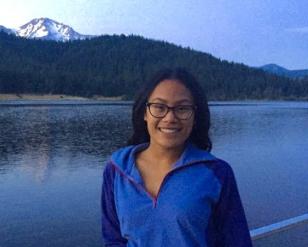The classroom is the place where students can intentionally reflect on their involvement and where they can see themselves as agents of change and they can also see themselves as someone who is taking a role in an organization. So it helps the student frame what they often think of as saving the world….if that coaching comes from the classroom, then it’s so much easier for us to guide them in their tasks and in the organization itself,” said Elaine Tokolahi as she explains what she sees, as one of the greatest benefits that a classroom can provide to a community partner.
This was the third faculty workshop of the year which was hosted by the Center for Community Engagement (CCE). The facilitators included Dr. Missy Garvin (Department of Psychology and lead Faculty Fellow in the CCE) and Dr. Damien Wilson (Department of Business and Economics and Faculty Fellow in the CCE). We were also joined by CCE staff, AmeriCorps VISTA members, as well as Dr. Yajuan (Vivian) Xiang (Associate Professor in Early Childhood Studies at SSU), Dr. Adele Santana (Associate Professor in Business and Economics at SSU), Dr. Seth Pollack (Faculty in Service Learning at CSU Monterey Bay and Director of Service Learning Institute), Dr. Julia Heinen (Director of Community Engagement at CSU Northridge), Dr. Elena Klaw (Faculty in Psychology at SJSU and Director of the Center for Community Engagement Learning and Leadership), Dr. Rochelle Smarr (Director of Service Learning and Civic Engagement at CSU San Marcos), Dr. Fawn Canady (Assistant Professor in Education at SSU) and Elaine Tokolahi (Center for Volunteer and Nonprofit Leadership in North Bay).
This workshop focused on how faculty, who are teaching a service-learning course, can find different ways to deepen their service. To start things off, Dr. Garvin asked the participants to pick a service-learning course they teach and think about how they could deepen it. In small breakout groups, Dr. Xiang explained she is “actually looking forward to incorporating service-learning in one of the classes I will be teaching in the fall, which is language development… I found one of the areas I would like to improve [which] is to provide language of context for my students to understand how multiple factors actually contribute to learning language.” She then goes on to explain she’s currently going through the process of finding potential community partners who can help “set up the class and goals together.” To add on, Dr. Wilson stated “identifying a partner and having a partner who recognizes what the students can provide you and concurrently, what the students can provide the partner, is a really good starting point.” The faculty attending this workshop were committed to learning how to improve their service-learning.
At the very end, while speaking about her experience in teaching service-learning courses, Dr. Garvin explained that in her course “the project the partner needed, that we found, related to civic learning and then came the project...there’s always these different angles in which we can do it and that’s one of the things that I loved most about talking to people who teach service- learning, is that you see all of the different ways in which people can come about it.”
Overall, from a students perspective, this workshop was very insightful. Just seeing behind the scenes of service-learning is interesting. One thing I thought was compelling about this workshop was seeing how faculty find ways to create strong relationships with their community partner(s), as well as setting up their classes so that students can apply what they have learned in the classroom to their projects in the community.


